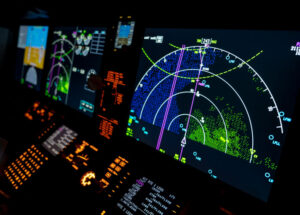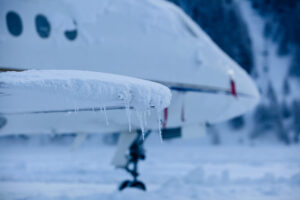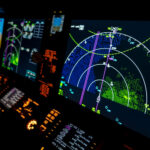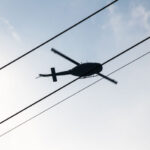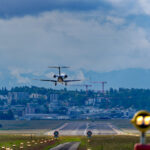The COVID-19 virus pandemic has the industry looking at how to effectively disinfect our aircraft
Many of us in business aviation find ourselves in uncharted territory with the explosion of the COVID-19 virus pandemic. We learn a lot of things in pilot training, but how to disinfect our aircraft isn’t usually one of them. What do we have to do to keep ourselves and our passengers safe after a flight in this highly contagious environment?
The typical “pick up the trash and cross the seatbelts” isn’t going to cut it in at this time. But how clean is clean enough? What if no one on board looked sick? Are there different cleaning agents we must use? So many questions!
Fortunately, the NBAA has recently published guidance for aircraft cleaning procedures. They recommend we continue with our routine cleaning with one exception: if anyone has been symptomatic on the flight or immediately after, enhanced cleaning procedures should be added.
For protection while cleaning, the recommended personal protective equipment (PPE) during the COVID-19 pandemic includes the following:
- Disposable gloves
- Disposable gown
- If splashing is possible, eye protection should be worn
Disinfectants that can be used against COVID-19 can be found on the EPA’s website, www.epa.gov. Some recommended products are:
- Microfiber towels
- Terry cloth towels
- Sontara Aerospace wipes
- Celeste Sani-side disinfectant
- Celeste Sani-side EX3
- Celeste Sani-side FSC
In the cabin area, work in small areas and spray hard surfaces with Sani-side EX3 and allow a contact time of 5 minutes before wiping clean. Leather surfaces should also be sprayed with EX3 and upholstery and carpets should be lightly misted with EX3 and then allowed to air dry.
For soft, porous surfaces (such as cloth seats and cloth seat belts) clean the seat of the symptomatic passenger and then continue cleaning within six feet in all directions. For items that can be laundered, wash on warm and then dry completely on high heat. For non-porous, hard surfaces (such as leather or vinyl seats, seatbacks, and light controls) also clean within six feet of where the symptomatic passenger sat, or may have been in contact with.
The galley, kitchen area, and food prep areas should receive disinfection with Sani-cide FSC. After 30 seconds of contact time, surfaces can be wiped clean with a clean microfiber cloth and are now ready to use. Mirrors, glass, and screens should be cleaned with Sani-side EX3.
When cleaning the lavatory, don’t forget to include the door handle, locking device, seat, faucet, wash basin, adjacent walls, and counter. Spray with EX3 or disinfectant and leave on for the full contact time. Wipe all areas clean with a cloth and then immediately discard all cleaning supplies into a dedicated trash bin outside of the aircraft.
Operators who want specific procedure information for Bombardier, Dassault, Embraer, Gulfstream and Textron Aviation can take a look at the NBAA page regarding COVID-19, which includes links directly to these manufacturer’s OEMs.
The additional reading below includes links to international sources. If you plan to fly internationally, please check with the countries you will be flying to before proceeding. Information is changing rapidly and so are procedures and rules.
It sure seems like a lot of work, but for those of us without dedicated cleaning crews, this is important information. Flight instructors, charter pilots, and corporate crews all must take responsibility for the safety of their passengers and, of course, themselves. EMS medical crews receive dedicated pilot training for disinfecting their aircraft, but the rest of us have to learn “on the fly”. Hopefully this information will help with the learning curve.
RELATED CTS TRAINING


